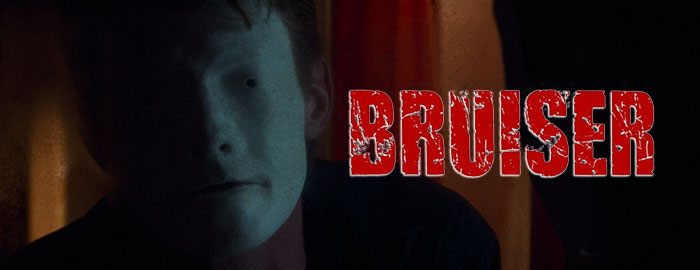


 had a rougher time with studio and independent distribution than George A. Romero, who was
had a rougher time with studio and independent distribution than George A. Romero, who was 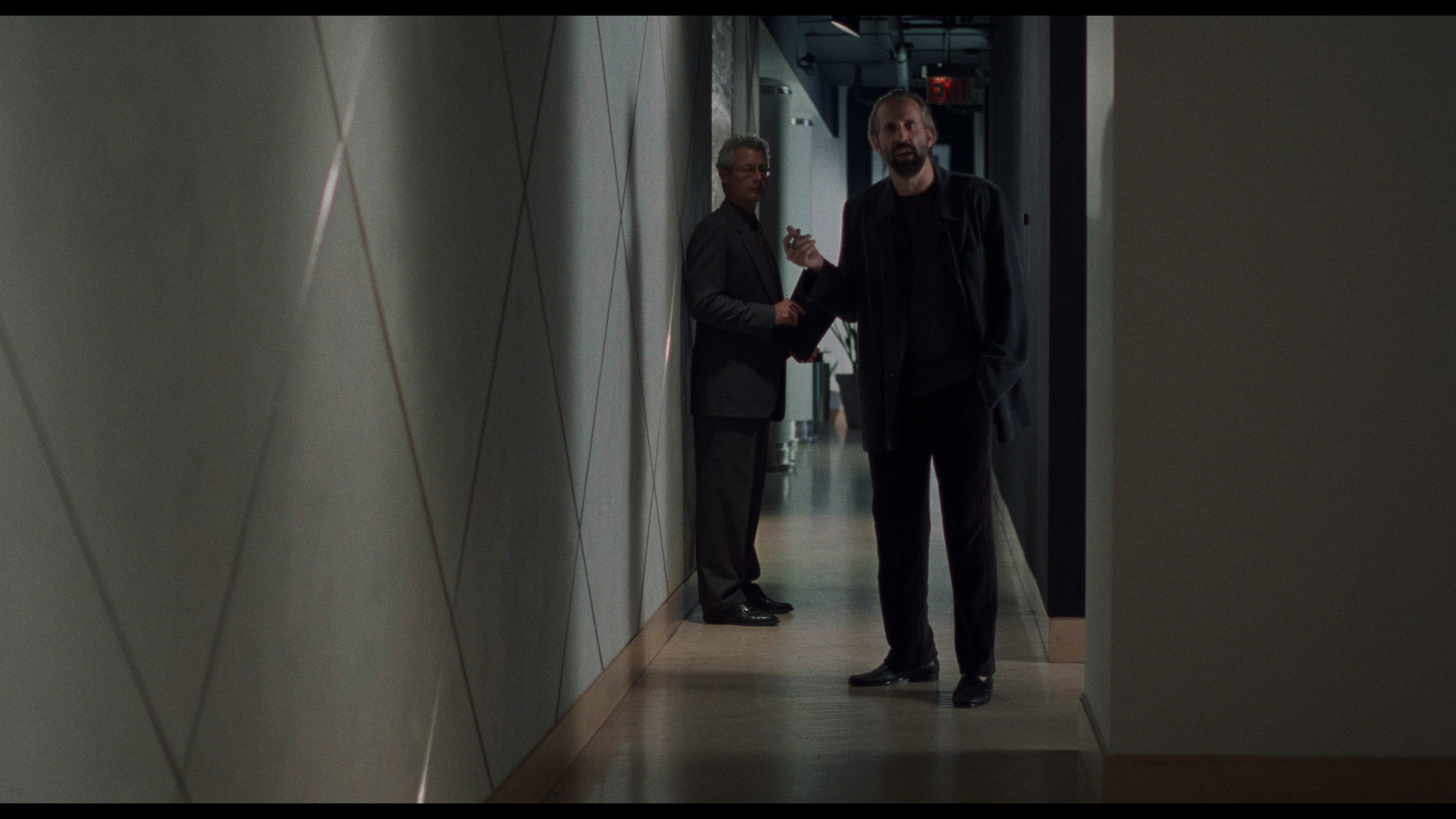 based out of Pittsburgh for the height of his career but had relocated to Canada by the time the 21st century rolled around. 2000's Bruiser marked a much belated return after his two very troubled prior films, 1988's Monkey Shines and 1993's The Dark Half, with a slew of rejected and aborted projects scattered in the interim. With that in mind it's hard to avoid approaching Bruiser as being at least partly autobiographical (and maybe a form of very dark wish fulfillment), with Romero's background in industrial shorts and advertising serving as a major part of the story as well. This would prove to be Romero's final non-zombie film, with only three more Dead titles left to come in the next nine years.
based out of Pittsburgh for the height of his career but had relocated to Canada by the time the 21st century rolled around. 2000's Bruiser marked a much belated return after his two very troubled prior films, 1988's Monkey Shines and 1993's The Dark Half, with a slew of rejected and aborted projects scattered in the interim. With that in mind it's hard to avoid approaching Bruiser as being at least partly autobiographical (and maybe a form of very dark wish fulfillment), with Romero's background in industrial shorts and advertising serving as a major part of the story as well. This would prove to be Romero's final non-zombie film, with only three more Dead titles left to come in the next nine years. 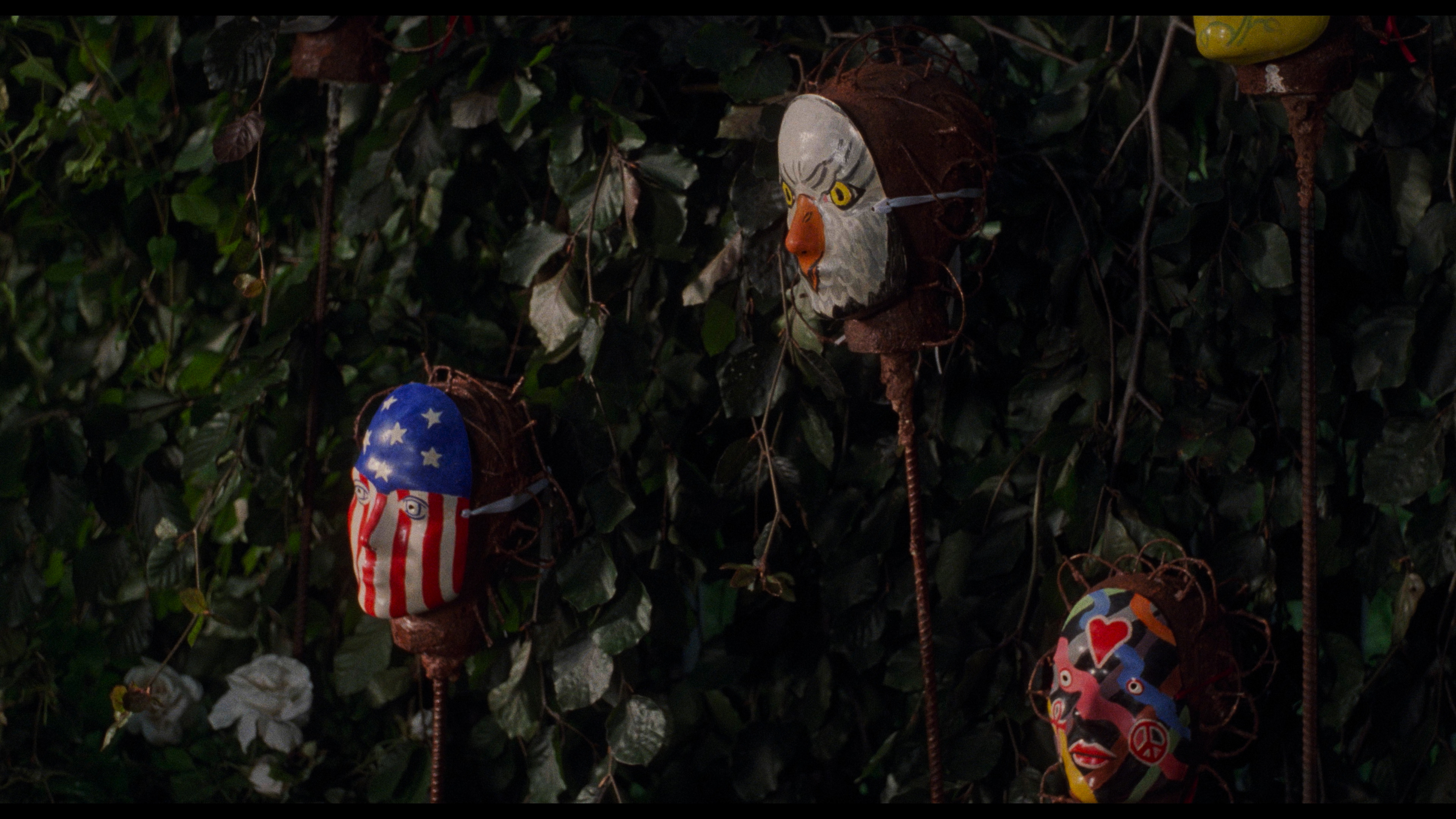 adds a mold from Henry's face to her collection of artistic masks, though he wants to leave it blank with no painted designs. Much to his bewilderment, his own face is replaced with
adds a mold from Henry's face to her collection of artistic masks, though he wants to leave it blank with no painted designs. Much to his bewilderment, his own face is replaced with  that featureless white mask, and he embarks on an escalating string of homicides against those who have wronged him starting with the thieving household maid. Believing that all of his oppressors need to be eliminated in order to restore his true face, Henry becomes bolder and more flamboyant in his elimination process.
that featureless white mask, and he embarks on an escalating string of homicides against those who have wronged him starting with the thieving household maid. Believing that all of his oppressors need to be eliminated in order to restore his true face, Henry becomes bolder and more flamboyant in his elimination process.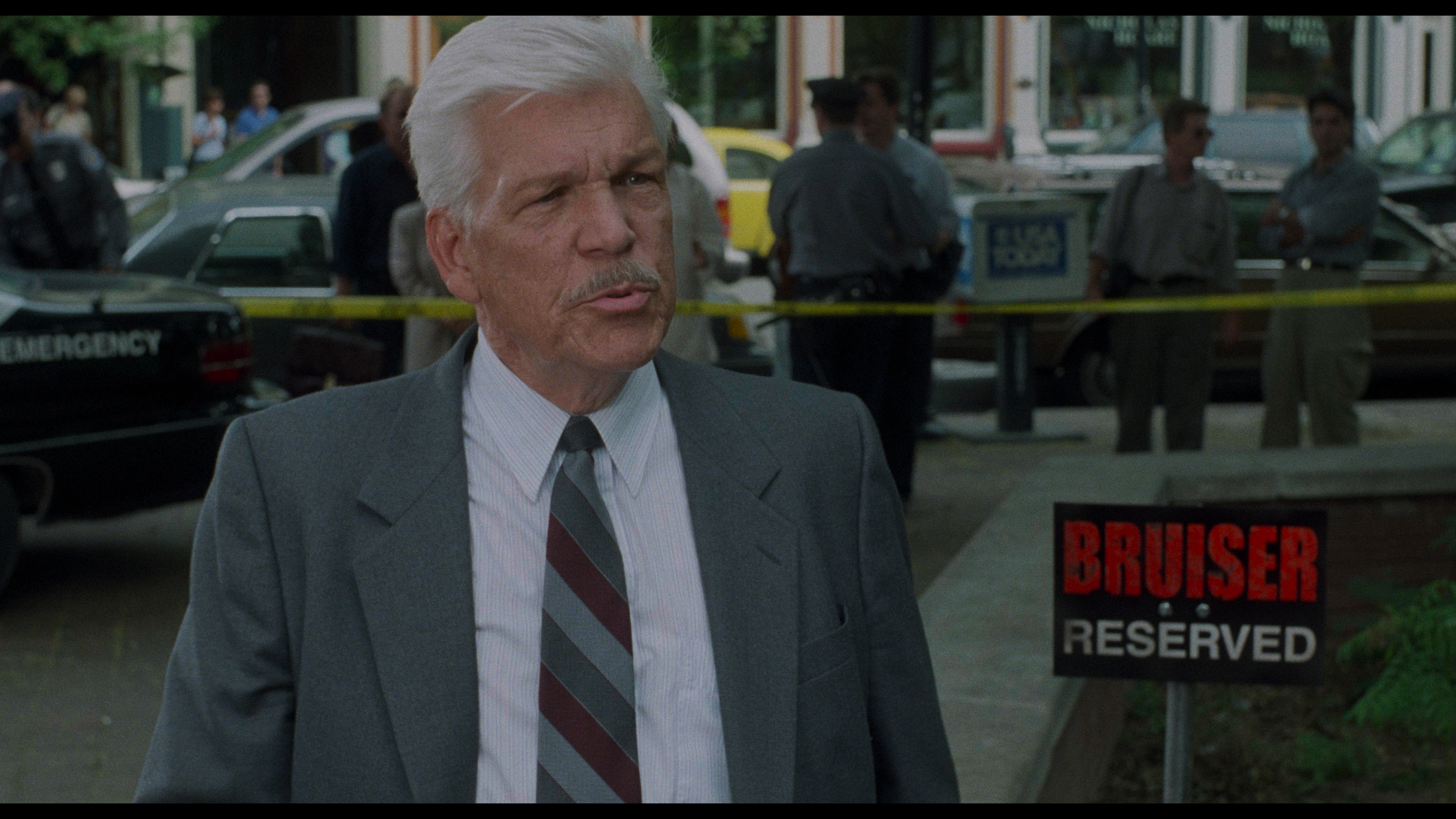 Stormare-iest, providing one of the era's least expected nude scenes. Also seen in the same year's Snatch, Flemyng is an interesting choice for
Stormare-iest, providing one of the era's least expected nude scenes. Also seen in the same year's Snatch, Flemyng is an interesting choice for  the lead and uses his physicality for most of his performance given that he's wearing a mask over his face for the majority of the running time. If that weren't enough, you also get none other than the great Tom Atkins as the cop on the case, a reunion after his prior Romero appearances in Creepshow and Two Evil Eyes.
the lead and uses his physicality for most of his performance given that he's wearing a mask over his face for the majority of the running time. If that weren't enough, you also get none other than the great Tom Atkins as the cop on the case, a reunion after his prior Romero appearances in Creepshow and Two Evil Eyes. 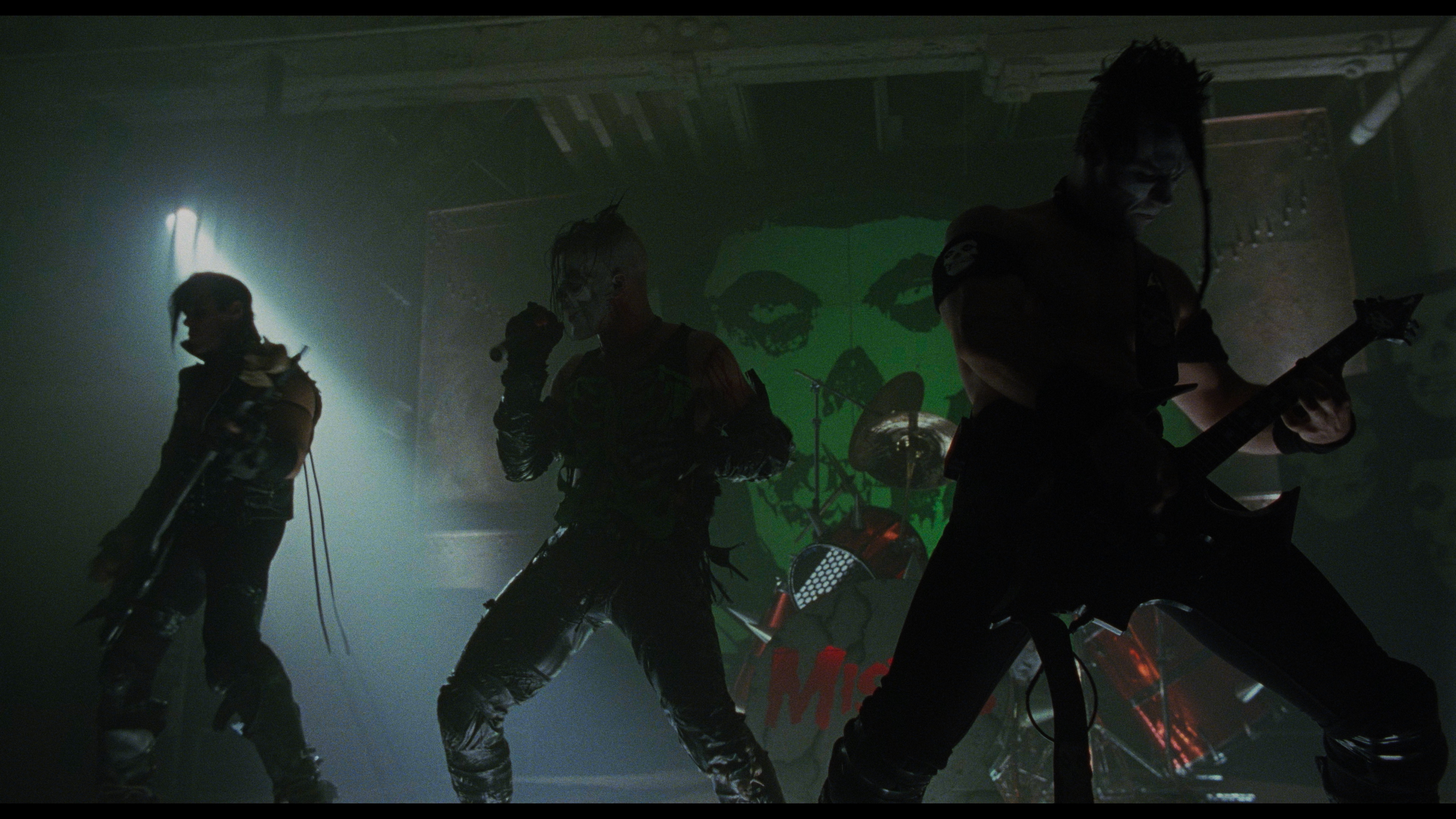 transfers. DTS-HD MA options are available for English 5.1 and 2.0 mixes (with optional improved English SDH subtitles); the 5.1 obviously has more split surround activity while the 2.0 is tighter and has more bass,
transfers. DTS-HD MA options are available for English 5.1 and 2.0 mixes (with optional improved English SDH subtitles); the 5.1 obviously has more split surround activity while the 2.0 is tighter and has more bass, 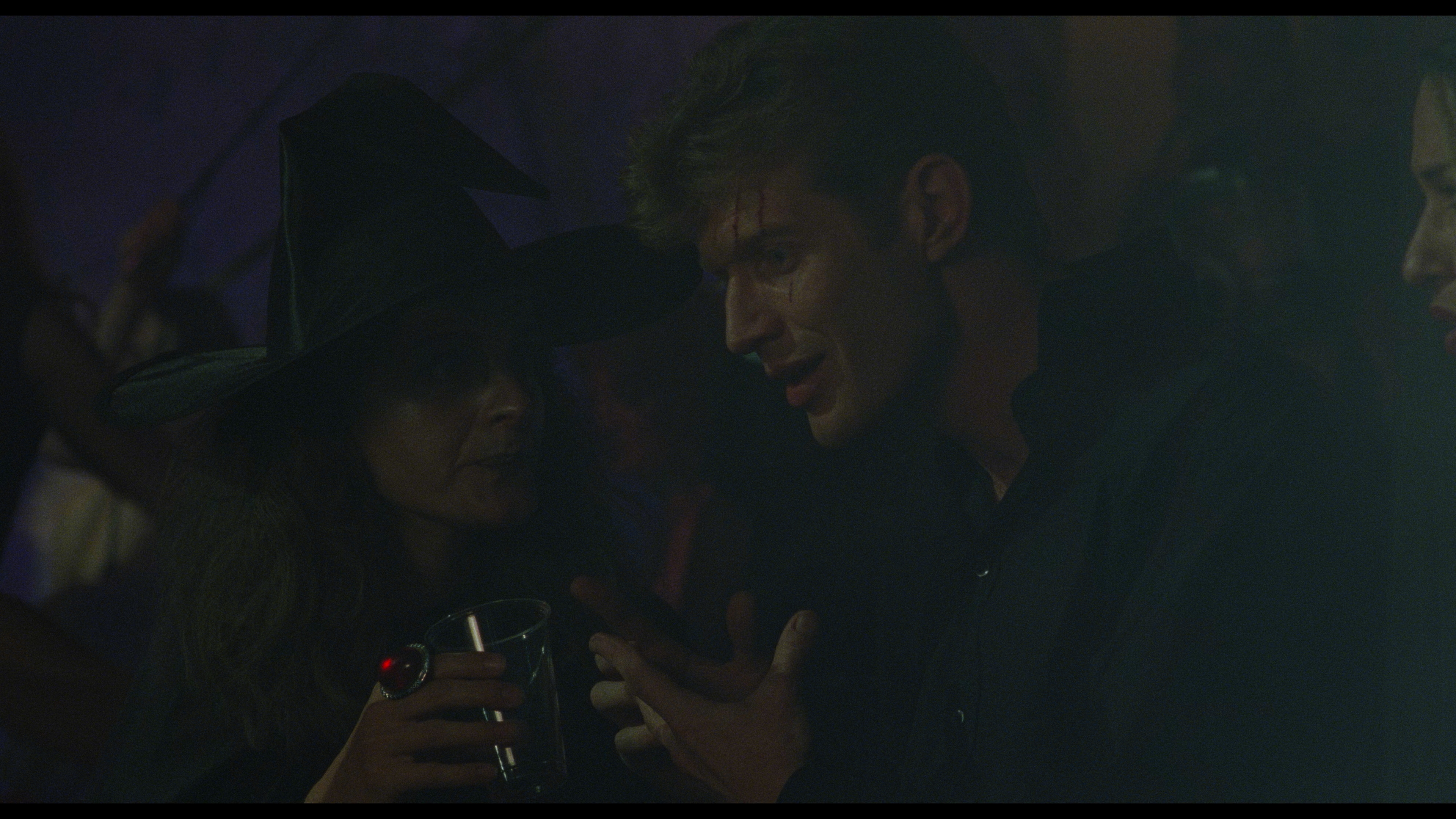 so try 'em both. The original commentary is ported over here, and you also get a previously unheard 2013 Romero conversation (43m42s) with James Blackford largely covering the zombie cycle and his early career but also going all the way up to Land of the Dead (including his budgetary frustration with Dennis Hopper's cigars). "Behind the Mask" (9m26s) is a new interview with Flemyng explaining the sudden demand for him and other Lock, Stock and Two Smoking Barrels actors, the process of getting hired for the film and heading off to Canada, the challenge of wearing that tight mask, and much more, including a very funny Romero impression. In "A Perfect Fit" (8m59s), former Misfits drummer Dr.Chud covers the band's participation in the soundtrack and his extreme joy at working with Romero as well as his positive reaction to the final result. In "The Worm That Turned" (11m44s), Kim Newman studies Bruiser from the perspective of Romero's move away from blue collar stories in the decade leading up to this as well as its place in his bumpy, gap-filled career that made this one easy to overlook. Also included are an intro by Jean-Baptiste Thoret (10m15s) from the Studiocanal release, here subtitled in English for the first time, along with a 1m17s Dr.Chud soundtrack demo, the North American and French theatrical trailers, and a 107-image gallery of photos and promotional material. The package also comes with an 80-page insert book featuring a new essay by Craig Ian Mann ("The Face of Business") about the film's place in office and corporate-themed horror, a 2000 Fangoria interview with Romero on the set as well as a production report by Michael Rowe, a Rowe interview with producer and makeup artist Glenn Hetrick about the music video Romero made for The Misfits at the same time, sample critical responses, and film credits.
so try 'em both. The original commentary is ported over here, and you also get a previously unheard 2013 Romero conversation (43m42s) with James Blackford largely covering the zombie cycle and his early career but also going all the way up to Land of the Dead (including his budgetary frustration with Dennis Hopper's cigars). "Behind the Mask" (9m26s) is a new interview with Flemyng explaining the sudden demand for him and other Lock, Stock and Two Smoking Barrels actors, the process of getting hired for the film and heading off to Canada, the challenge of wearing that tight mask, and much more, including a very funny Romero impression. In "A Perfect Fit" (8m59s), former Misfits drummer Dr.Chud covers the band's participation in the soundtrack and his extreme joy at working with Romero as well as his positive reaction to the final result. In "The Worm That Turned" (11m44s), Kim Newman studies Bruiser from the perspective of Romero's move away from blue collar stories in the decade leading up to this as well as its place in his bumpy, gap-filled career that made this one easy to overlook. Also included are an intro by Jean-Baptiste Thoret (10m15s) from the Studiocanal release, here subtitled in English for the first time, along with a 1m17s Dr.Chud soundtrack demo, the North American and French theatrical trailers, and a 107-image gallery of photos and promotional material. The package also comes with an 80-page insert book featuring a new essay by Craig Ian Mann ("The Face of Business") about the film's place in office and corporate-themed horror, a 2000 Fangoria interview with Romero on the set as well as a production report by Michael Rowe, a Rowe interview with producer and makeup artist Glenn Hetrick about the music video Romero made for The Misfits at the same time, sample critical responses, and film credits.![]()